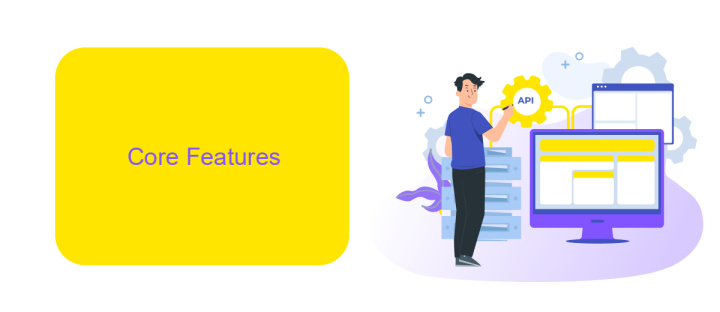Camunda Vs MuleSoft
When it comes to business process automation and integration, choosing the right platform is crucial. Camunda and MuleSoft are two leading solutions in this space, each offering unique features and capabilities. This article aims to compare Camunda and MuleSoft, highlighting their strengths and weaknesses to help you make an informed decision for your enterprise needs.
Introduction
In today’s digital landscape, businesses are increasingly relying on robust integration platforms to streamline their processes and enhance operational efficiency. Two prominent players in this domain are Camunda and MuleSoft, each offering unique features and capabilities tailored to different business needs.
- Camunda: An open-source workflow and decision automation platform designed for business process management (BPM).
- MuleSoft: A comprehensive integration platform that connects applications, data, and devices with APIs.
Choosing the right platform depends on various factors such as the complexity of workflows, integration requirements, and scalability. Additionally, services like ApiX-Drive can further simplify the integration process by providing seamless connectivity between different applications and systems. This article aims to provide a comparative analysis of Camunda and MuleSoft, helping you make an informed decision for your business needs.
Core Features

Camunda is a robust workflow and decision automation platform that offers extensive BPMN (Business Process Model and Notation) capabilities. It is designed to handle complex business processes with ease, providing a flexible and scalable environment for developers and business users alike. Camunda's core features include a powerful process engine, a user-friendly modeler, and extensive integration options. The platform supports DMN (Decision Model and Notation) for decision automation and CMMN (Case Model and Notation) for case management, making it a comprehensive solution for various automation needs.
MuleSoft, on the other hand, is an integration platform that focuses on connecting applications, data, and devices with its Anypoint Platform. It provides a unified solution for API management, data integration, and connectivity, enabling seamless communication between different systems. MuleSoft's core features include a robust API gateway, a versatile data transformation engine, and pre-built connectors for various applications and services. For businesses looking to streamline their integration processes, tools like ApiX-Drive can complement MuleSoft by offering additional automation capabilities, simplifying the setup of integrations, and enhancing overall efficiency.
Use Cases

Camunda and MuleSoft serve different purposes and are often used in various scenarios. Camunda excels in workflow and business process management, making it ideal for automating complex business processes. MuleSoft, on the other hand, is a leading integration platform that connects applications, data, and devices, enabling seamless data flow across systems.
1. **Business Process Automation**: Camunda is perfect for organizations looking to automate and optimize their business processes, such as order management, customer onboarding, and compliance workflows.
2. **API Management and Integration**: MuleSoft shines in scenarios requiring robust API management and integration capabilities. It is often used to connect disparate systems, ensuring data consistency and real-time communication.
3. **Hybrid Cloud Integration**: For businesses operating in hybrid cloud environments, MuleSoft offers tools to integrate on-premises and cloud applications, facilitating smooth data exchange and operational efficiency.
For those needing to set up integrations quickly and efficiently, services like ApiX-Drive can be invaluable. ApiX-Drive simplifies the process of connecting various applications and automating data flows, enhancing the capabilities of both Camunda and MuleSoft in their respective use cases.
Pricing

When comparing the pricing models of Camunda and MuleSoft, it's essential to consider the specific needs and scale of your organization. Camunda offers a subscription-based pricing model, which is typically more affordable for smaller businesses or those just starting with process automation. Their pricing is transparent, and you can easily get a quote based on your requirements.
MuleSoft, on the other hand, operates on a more complex pricing structure that is often better suited for larger enterprises. MuleSoft's pricing is based on the number of APIs, data volume, and the level of support required, which can make it more expensive but also more flexible for extensive integration needs.
- Camunda: Subscription-based, suitable for small to medium businesses.
- MuleSoft: Flexible pricing based on usage, ideal for large enterprises.
- ApiX-Drive: Affordable integration services, useful for connecting various platforms.
Choosing between Camunda and MuleSoft will depend on your business size, budget, and specific integration requirements. For those looking for an additional integration service, ApiX-Drive offers a cost-effective solution to seamlessly connect multiple platforms, enhancing your overall process automation strategy.
Conclusion
In conclusion, both Camunda and MuleSoft offer robust solutions for business process management and integration needs. Camunda excels in providing a lightweight, developer-friendly platform with strong BPMN support, making it ideal for organizations focused on process automation and workflow management. On the other hand, MuleSoft stands out with its comprehensive integration capabilities and extensive API management features, catering to enterprises looking for seamless connectivity across diverse systems.
Ultimately, the choice between Camunda and MuleSoft depends on the specific requirements and priorities of your organization. For businesses that require advanced integration services with minimal setup, tools like ApiX-Drive can also be considered to streamline the integration process. By carefully evaluating the strengths and limitations of each platform, you can make an informed decision that aligns with your strategic goals and operational needs.


FAQ
What are the primary differences between Camunda and MuleSoft?
Which platform is better for business process management (BPM)?
Can I integrate Camunda with MuleSoft?
What are the deployment options for Camunda and MuleSoft?
What are some tools available for automating integrations with these platforms?
Apix-Drive will help optimize business processes, save you from a lot of routine tasks and unnecessary costs for automation, attracting additional specialists. Try setting up a free test connection with ApiX-Drive and see for yourself. Now you have to think about where to invest the freed time and money!

